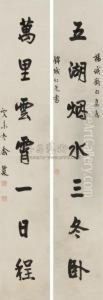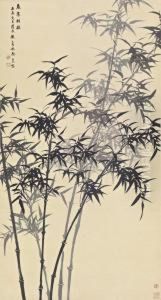Yu Shaosong Paintings
Yu Shaosong was a notable Chinese artist and art educator born in 1904 in Jiangsu Province, China. Coming of age during a period of significant social and political upheaval in China, Yu's artistic journey was deeply intertwined with the cultural and historical transformations of his time. He is particularly renowned for his contributions to Chinese landscape painting and for his efforts in art education, which helped to cultivate a new generation of Chinese artists.
Yu Shaosong's artistic career was marked by a blend of traditional Chinese techniques and the influences of Western art, reflecting the broader movement of the New Culture Movement in China that sought to modernize Chinese society through the adoption and adaptation of Western ideas and practices, including in the arts. He was deeply influenced by the traditional Chinese landscape painting style, Shanshui, which emphasizes the spiritual and emotional aspects of nature. However, Yu also studied Western painting techniques, which allowed him to infuse his works with a sense of realism and perspective that was innovative for Chinese art at the time.
In addition to his work as an artist, Yu Shaosong was a passionate educator. He believed in the power of art education to transform society and played a significant role in the development of art education in China. Throughout his career, he taught at several prestigious institutions, where he advocated for a curriculum that combined the study of Chinese and Western art traditions, aiming to foster a generation of artists who were both deeply rooted in their cultural heritage and open to global influences.
Tragically, Yu Shaosong's life and career were cut short when he died in 1944, at the age of 40. Despite his relatively brief career, his impact on Chinese art and art education was profound. His works continue to be celebrated for their beauty and depth, and his educational philosophies remain influential in the field of art education in China. Yu Shaosong's legacy is a testament to the enduring power of cultural exchange and the transformative potential of art education.






